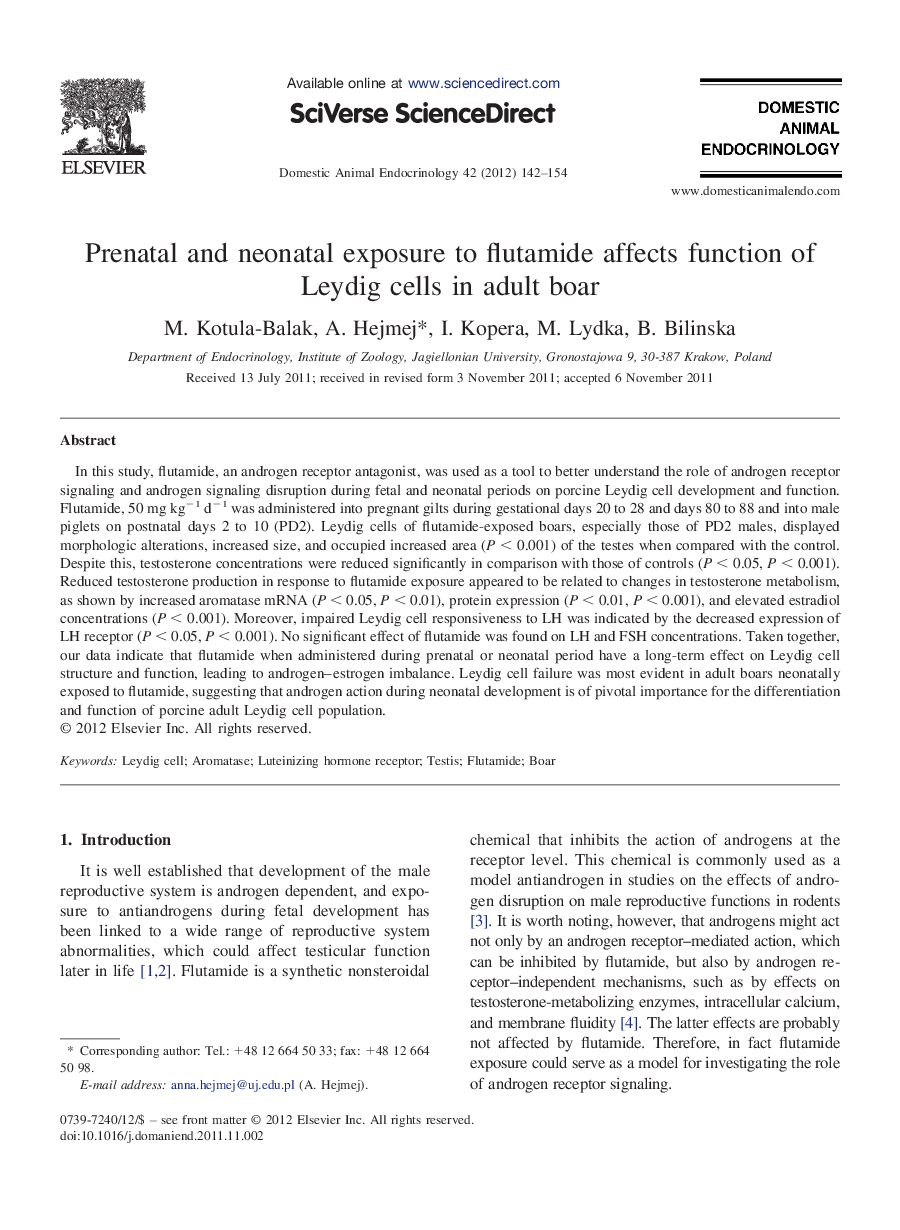| Article ID | Journal | Published Year | Pages | File Type |
|---|---|---|---|---|
| 2393767 | Domestic Animal Endocrinology | 2012 | 13 Pages |
In this study, flutamide, an androgen receptor antagonist, was used as a tool to better understand the role of androgen receptor signaling and androgen signaling disruption during fetal and neonatal periods on porcine Leydig cell development and function. Flutamide, 50 mg kg−1 d−1 was administered into pregnant gilts during gestational days 20 to 28 and days 80 to 88 and into male piglets on postnatal days 2 to 10 (PD2). Leydig cells of flutamide-exposed boars, especially those of PD2 males, displayed morphologic alterations, increased size, and occupied increased area (P < 0.001) of the testes when compared with the control. Despite this, testosterone concentrations were reduced significantly in comparison with those of controls (P < 0.05, P < 0.001). Reduced testosterone production in response to flutamide exposure appeared to be related to changes in testosterone metabolism, as shown by increased aromatase mRNA (P < 0.05, P < 0.01), protein expression (P < 0.01, P < 0.001), and elevated estradiol concentrations (P < 0.001). Moreover, impaired Leydig cell responsiveness to LH was indicated by the decreased expression of LH receptor (P < 0.05, P < 0.001). No significant effect of flutamide was found on LH and FSH concentrations. Taken together, our data indicate that flutamide when administered during prenatal or neonatal period have a long-term effect on Leydig cell structure and function, leading to androgen–estrogen imbalance. Leydig cell failure was most evident in adult boars neonatally exposed to flutamide, suggesting that androgen action during neonatal development is of pivotal importance for the differentiation and function of porcine adult Leydig cell population.
